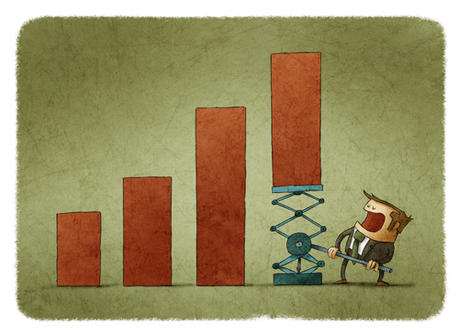Is Communication Sabotaging Your Ability to Innovate?
Avoid these four communications landmines as you navigate the stages of innovation.
Whitepaper: Stimulating and Measuring Open and Cross Innovation
As two intermediaries from Hamburg that foster open and cross innovation processes, Science Scout (an initiative of Hamburg Innovation) and Cross Innovation Hub (Hamburg Kreativ Gesellschaft) joined forces to start a discussion around the stimulation and measurement of open and cross innovation processes.
Five Questions to Answer Before Crowdsourcing
As the director of the IdeaScale Crowd community, I recently had the opportunity to share some insights and best practices for innovators who are new to crowdsourcing, and may not have conducted their first campaign yet. We discussed five questions to ask as you prepare for your first campaign, why those questions are important, and some examples of good and bad answers to those questions.
How to Make Your Design Thinking Program Turn Into Something Real
Why do a large part of the design thinking projects in the corporate world never pass through the prototype phase? In recent years I’ve been involved with many design thinking initiatives. Many of them related to the development of new products inside large companies in industries such as finance, health, education and consumer goods.
How Business Intelligence Software can Help you Increase Operational Efficiency
Business Intelligence software is an essential tool for analyzing your company's strengths and weaknesses. From inventory management, to accounting, to customer intelligence and beyond, there are many ways you can use BI software to inform your decision-making, increase operational efficiency, and gain a competitive edge.
Unlocking the One Trillion-Dollar Sustainable Innovation Opportunity
Last week Unilever announced research showing that one-third of consumers now purchase its brands based on their good social and environmental performance, but went on to suggest that brands are missing an opportunity from not promoting sustainability effectively. Getting this right could unlock a further $1trn market opportunity for sustainability innovators.
4 Things to Think About When Creating Your Innovation Roadmap
This time of year is full of meetings with leadership and teams in order to help them prepare for the year ahead. People discuss financial goals, sustainability goals, profitability targets, customer success metrics, and more, but there are also numerous research & development teams out there who are coordinating their annual innovation strategy who struggle in their process to create a cohesive innovation strategy.
Industry 4.0 and the Internet-of-Things (IoT): Learning from the German Chemical Industry
The keyword “Industry 4.0” is no longer an empty cliché or a black box; it is currently probably the most important topic within the German economy. Not only will existing processes be revolutionized – but also new businesses and business models will arise. More and more companies have already started to tap into its potential.
Scaling: How to Slay the Entrepreneurial Dragon
If you’re reading this, then you probably know the feeling - You’ve reached a certain point in your company’s growth where everything is looking good: you have the right people, the right product, and everyone is happy. Then, you realize that this comfort isn’t going to last forever. Scaling up is a scary step, because it’s easy to be too ambitious and undermine the progress you’ve already made.
7 Steps to Platform Transformation – Part I
Too many notes, Mozart was once told. Too many ideas, we might say today. The culture of innovation is awash with idea generation and its sidekick, fail-fast fail cheap innovation. Worse, we need a culture of transformation not just innovation. Accenture recently reported that 81% of executives they interviewed see platforms as central to their strategy over the next three years.
Launching an Innovation Program: What You Don’t Know
Although innovation programs are becoming more and more embedded within the enterprise, it is still very common to find organizations that are just starting to experiment with formal, continuous innovation programs. Many IdeaScale clients that come to us are quietly launching pilot programs as proof-of-concept initiatives that will confirm innovation value for senior leadership.
Avoid Innovation Paralysis – Why all Companies Can and Must Embrace Change
Someone once told me this: “Innovation is like an apparition of the Virgin Mary: one person saw her, but everyone talks about it.” Although funny, the quote aptly captures an attitude towards innovation that exists in many companies today. Innovation – and the skills that enable it – are sometimes considered as mystical gifts, preserved for the chosen few. In other cases, innovation is feared, because it involves unregulated processes, risk taking and investments with unpredictable outcomes. In this blog post, I’d like to make a case against this kind of innovation paralysis. Every company must innovate, and with the right understanding of the word ‘innovation’, every company can.
Do You Know the Seven Stages of Innovation?
At IdeaScale, we define prolific innovators as organizations that have moved more than half of their ideas to the final stage. This doesn’t necessarily mean that every suggested idea became a value-generating, implemented reality. This means that the completed ideas had each been investigated, responded to, and a decision was made to move forward or not. But of course, at least a portion of those completed ideas generate measurable constructive outcomes.
Six Levers For Solving The Corporate Innovation Problem – Part 3
This is the third part of a three-part article series. We are investigating why – despite all the investments made into the early phase of innovation – innovation results remain disappointing. We call this the “corporate innovation problem”. In the first part we illustrated that companies are investing heavily into the early phase of innovation. In the second part, we provided some metrics on the corporate innovation problem and found that the corporate innovation problem actually consists of a “complexity” problem” and a “system problem”. In this article, we show six levers to change the “system problem” and think this is the way to solve the corporate innovation problem – and ultimately to increase innovation performance.
Six Levers for Solving The Corporate Innovation Problem – Part 2
This is the second part of a three-part article series. In the first part we illustrated that firms are investing heavily into the early phase of innovation. In this second part we show that despite of all these investments, innovation results remain disappointing. We call this the “corporate innovation problem”. We provide some metrics and find that there are two root causes. In the upcoming third part we will suggest that six levers can be used to address one of the root causes. We believe that moving these levers can provide a solution to the corporate innovation problem – and ultimately lead to increased innovation performance.
Six Levers for Solving the Corporate Innovation Problem – Part 1
Innovation is at the top of the Management Agenda for many companies. For excellence in innovation, companies have to master the chain of activities from discovering valuable insight into unmet customer needs to successful market adoption. However, despite large and growing investments into innovation, results remain disappointing. We call this the “corporate innovation problem”. In this 3-part article series we dig deeper into this problem and find that there are actually two root causes for it. We focus on one of the root causes – the “system problem” – and work out six levers of improvement. Acting on these levers offers a solution to the corporate innovation problem and ultimately increases innovation performance.
What Effect has Digital Innovation had on the World and your Business?
The Internet has forever changed how we work with innovation. Author Marta Domínguez spent the last five years observing the causes and effects of the digital wave and has gathered a list of 22 impacts on the world and your business.
4 Ways Your Travel Brand Can Innovate with the Help of the Crowd
When you’re thinking about innovation in the field of travel and transportation, more horsepower, hydraulics, and fuel efficiency might come to mind. But with the pace of change increasing rapidly, it’s difficult to imagine how government organizations and private companies will be able to absorb some of the most exponential and impactful changes that are sure to come in the next decade.
5 Key Requirements for Innovation Management Platforms
Selecting an Innovation Management Platform for your organization can be challenging, and there are several key features to have on your requirements list.
5 Ways to Create a Successful Innovation Program
You’ve heard it a thousand times: companies need to innovate in order to survive. The Googles and the Apples of the world are doing it- Google famously used to require employees to dedicate 20% of their time to innovation. But what exactly does it take to create a sustainable innovation program, especially if you are in an industry that is traditionally risk averse?
Getting From Ideas to Products
In a time when innovation and new product development are vital to remain competitive, large organizations are looking for ways to generate and execute new product ideas while mitigating risk. Increasingly, these companies seek to create a startup culture as a means to generate innovation.
Applying Collaborative Innovation in Advanced Manufacturing: an Example of Lean
Achieving authentic transformation across the manufacturing enterprise can seem as challenging as playing a competitive game of Jenga® in woolen mittens. In this article the innovation architect Doug Collins explores the role that collaborative innovation can play in realizing meaningful change. He grounds the exploration with an example from lean.
Where Do Good Ideas Go to Die?: The Problem with Your Old Idea Program
Our team found an example of one of the earliest workplace suggestion boxes the other day from 1721 when a shogun, Yoshimuni Tokugawa, wrote to his citizens “Make your idea known . . . Rewards are given for ideas that are accepted.’” This means that the concept of crowdsourcing ideas that can improve a city, workplace, or world has been around for quite some time.
Going Once, Going Twice, Going Three Times: Selling Your Idea
People cannot appreciate the value your idea offers if you fail to convey its relative advantage. In this article, the innovation architect Doug Collins shares a simple, good example of telling the right story at the right time to the right audience. Save this one for your clip file.
Results of a study on excellence in the Fuzzy Front-End (PART 2): Where leading firms are setting their priorities
This is the second part of a 2-part series on a study that innovation.support conducted. In the study we wanted to find out where leading firms from various industry sectors set their priorities in developing the early phase of their innovation funnels (“Fuzzy Front-End”). In this article we want to provide you with the key findings of our study.
How to Achieve Excellence in the Fuzzy Front-End – Part 1
The term “Fuzzy Front-End” (FFE) has been established for the early stage of innovation which determines the innovation effectiveness and hence ultimately innovation success. We wanted to better understand where leading firms are setting their priorities in the FFE currently and where they see things going in the future. To answer this, we conducted a study. Our train of thought and the main findings are in a two-part article series published here.
The Super Heroes of Solar
What is the real value of participating in innovation programs? In this article Rob Hoehn looks at his favourite example, working with the Department of Energy. They started by asking the public what the most pressing problems were when it came to making solar a cost-competitive resource for every citizen and then asked that same crowd to come forward with possible solutions to the top-voted problems.
Taking Action: Your Innovation Master Plan
The focus of the The Innovation Formula is on the innovation process that makes sense for small businesses, where lean, simple, and fast are essential. You may also be interested in a view of the innovation process that’s suited to larger companies, so this chapter provides an overview of the Innovation Master Plan framework that we use when we’re working with larger organizations on innovation projects and initiatives.




















